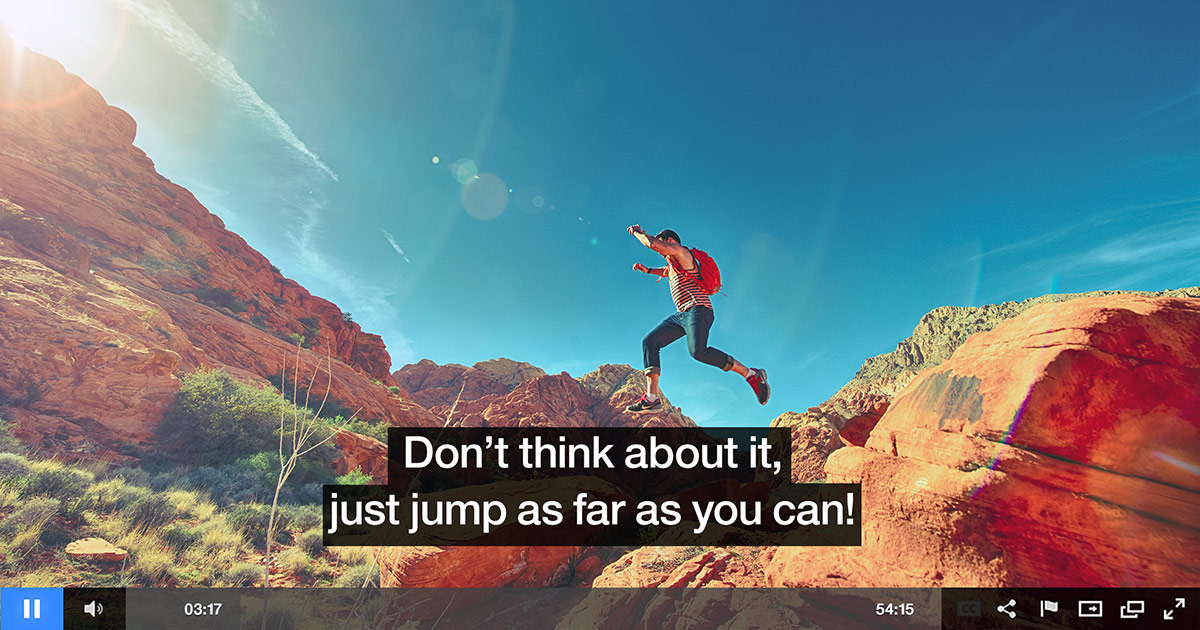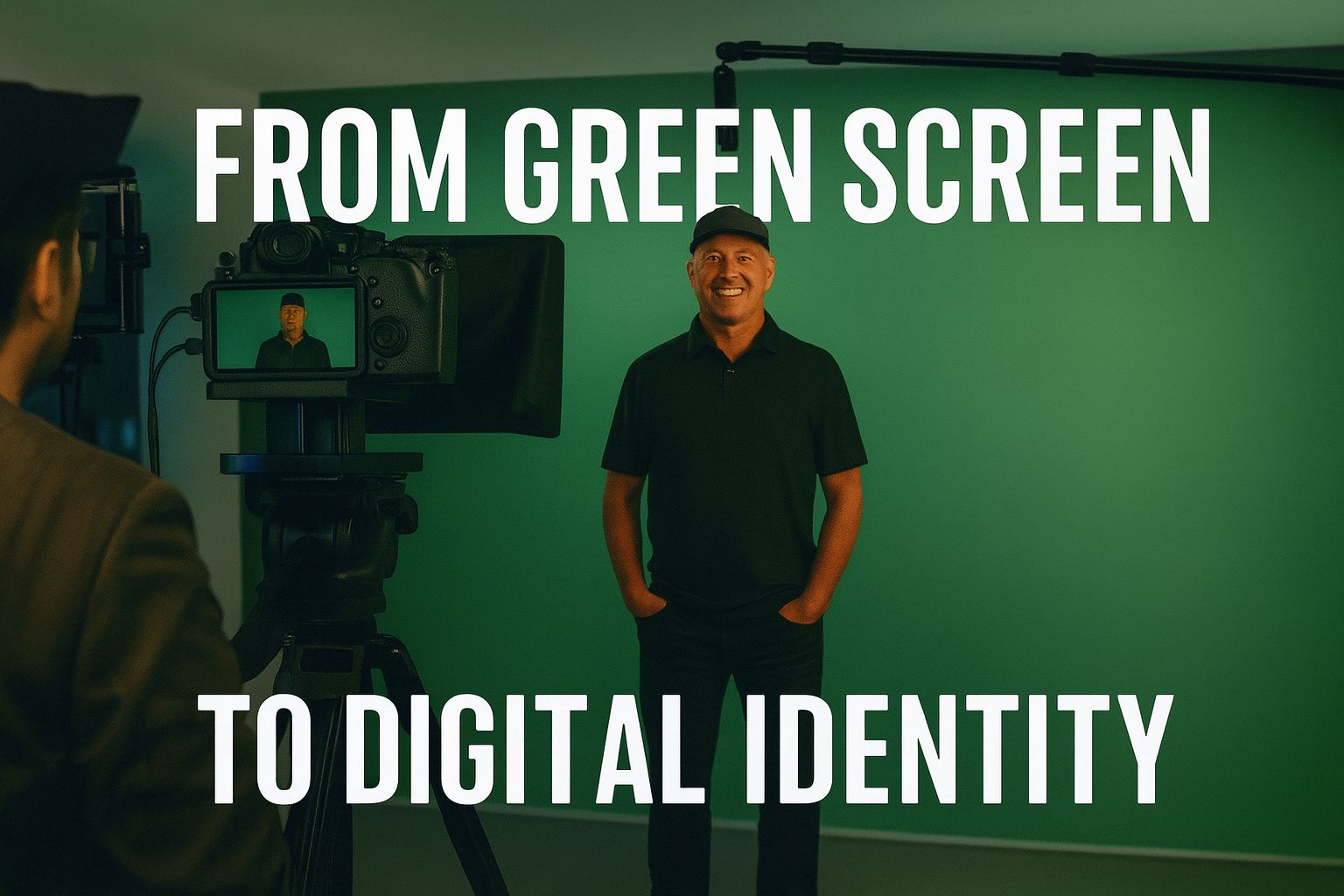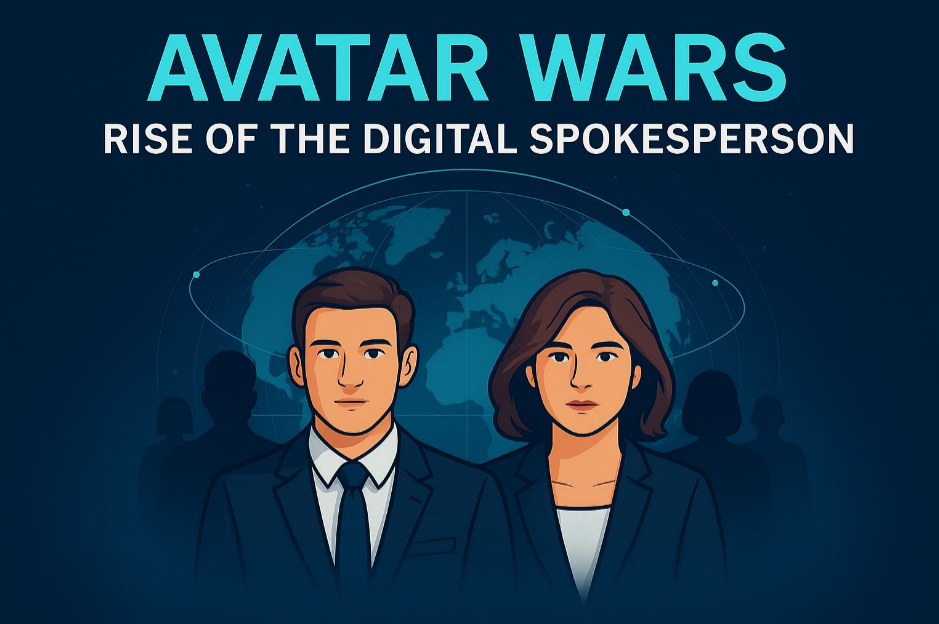
Adding Closed Captioning To Your Pre-Roll Campaigns Greatly Increases Engagement
There are a number of overlooked tools in the digital advertising industry that are lying in wait to be utilized. They’re practically begging to be used in your next campaign like “me! Pick me! Pick me!” And one of the loudest of them all is closed captions.
I know what you’re thinking. Isn’t that just for movies and tv that were filmed in a different language than I understand? No. To be blunt.
Closed captioning is the visual display of the audio portion of video programming. Captioning provides access to individuals who are deaf or have hearing loss and is often used in places where it is difficult to hear a TV program, such as restaurants and exercise facilities. However, we’re here to discuss the importance of closed captioning in your digital advertising specifically.
Closed captioning provides a stronger opportunity to present your brand’s message, allowing people with and without hearing disabilities maximize their enjoyment of your advertisement. Notice how we said “with or without hearing disabilities,” because we want to make it clear that closed captioning is beneficial to all, and here’s why.
By adding closed captioning to your ad, you are ensuring your ad is reaching far and wide and with impact. Reading your brand’s message on a screen betters viewers’ retention and literacy, widens your accessibility to non-english speakers, and allows on-the-go viewers to still engage with your ad in environments where sounds are discouraged or unavailable.
The bottom line is, if you’re not tailoring your video content to move with your audience’s on-the-go lifestyle and cater to your deaf and hard of hearing audience, you won’t get views. And without views, you’ll be missing out on valuable opportunities to create customers, drive traffic, generate sales, and increase revenue. Adding captions to video is a high-value, low-cost addition that offers a multitude of benefits to your advertisement’s success.
Now, let’s explore how adding captions to your video advertisements can significantly increase your views and leads.
ADA Guidelines
Though closed captioning serves purposes beyond being accessible to deaf and hard of hearing community, this is a huge factor that your business should be taking seriously. In 1990, The Americans with Disabilities Act (ADA) was passed, a law for the equality and protection of people with disabilities. It prohibits discrimination against people with disabilities for everyday tasks such as employment, purchasing goods and services, and getting around in public places.
The Act is important to us digital advertisers because as of 2010, the law was revised to include web accessibility from existing barriers, and therefore all online technology and electronic information must be accessible to those with disabilities. In addition to that, The ANA Production Committee recommends that all television ads be closed captioned, which shows you just how prominent closed captions are becoming.
Not only that, but by not making your ads closed captioned, you lose out on a massive community of potential customers. According to the National Institute on Deafness and Other Communication Disorders, approximately 36 million Americans have some degree of hearing loss. In addition to providing equal access for all viewers, it would make sense for advertisers to reach more than 36,000,000 Deaf and hard of hearing viewers who are potential consumers of their products, services, and business. And by doing so, you won’t need to worry about the expenses as captioning is a low-cost service where the rewards are potentially much greater than an ad without captioning.
Conversions and Reach
Closed captioning of advertisements makes good business sense because it maximizes the impact of an advertising message and does so at minimal cost but an extensive reach. As we’ve emphasized before, CC doesn’t just aid deaf or hard of hearing people, it’s an advantage for the masses, which means your ad can reach farther and hit harder by using CC.
A recent study revealed that 80% of television viewers used closed captions for reasons other than hearing loss. For instance, think of all the movies you’ve seen with less-than-articulate characters or characters with accents or inflections that make it hard to comprehend… remember how annoying it is to rewind, pause, and rewind again until you catch the dialogue you couldn’t quite catch?
Similarly, there are times where viewers are scrolling through their feeds and they are unable or choose not to have their volume on. I’m sure anybody could relate to being on your phone in a place where you shouldn’t have you’re phone playing loud sounds, such as when you’re in a doctor’s waiting room, at a social gathering, working (it happens, we know), and more. Captioning allows multitasking on-the-go viewers to enjoy video content, long form or short ads, without being bothering anyone else nearby. Though sound is usually critical to an ad’s composition, may that be music, narration, or dialogue, the majority of social video is watched on mute. This means if your ad is not catered to this hushed reality, its almost impossible for viewers to know what’s happening and the point your business is trying to make. Thankfully, CC is an easy solution that not only solves this issue but maximizes viewer retention and in some cases, literacy.
In a study done by Morton Ann Gernshbacher called “Video Captions Benefit Everyone,” it was revealed that not only are children more successful at gaining a foothold on literacy when using CC in their video viewing, but university students were found to better retain and recall videos they watched with captioning as opposed to those without. For your business, this means there is a better chance your audience will remember your ad’s message, product, service, or offer.
And let’s not forget the large audience that is non-english speaking people, or people whose English is not their first language. Viewers who’ve learned English as a second language particularly find CC helpful when watching video content as it provides them clarity while helping them develop an understanding of the more nuanced subtleties of the English language. You also have the option of creating your closed captions in another language in the case you are trying to target specific demographics such as Spanish speakers, which we will discuss further in our concluding case study.
As an advertiser you must understand that by choosing not to caption your ads, you are severely alienating a large percentage of the population that relies and/or benefits from it, which consequently, lowers your impact and reach, and thus, cheats you out of potential sales. And if there’s one thing that brings us all together, hearing impaired or not, we are all consumers. And what better way to cement your campaign’s message with your viewers than by having them be able to hear it without listening?
What Does Closed Captioning Look Like for Me?
In practice, there are a lot of ways you can close caption your video for maximum results in your audience engagement as well as Search Engine Optimization (SEO).
Since we’ve already discussed the benefits CC has for your audience, it’s important we share how closed captioning improves your chances of being seen by the right audience to begin with. Because search engines can’t actually watch your video ads, they really can’t index them as well as they could had you have, say, I don’t know… closed captioned? And without indexing, your videos can be considered non-existent. However, by adding professional closed captions in your ads, signals to Google that your business is important with value to share. One study, conducted by Liveclicker, discovered that there is a 16% revenue increase from web pages when there is a transcript available. This is because the surge in traffic was likely the doing of keyword searches matching closed captioned transcript text. And who wouldn’t want these results, especially for such a low cost, low difficulty addition?
Now, when it comes to the closed captioning itself, there are many features you can add to your text that will benefit your viewers as well as your SEO and there’s really nothing to lose. If viewers don’t want to see the closed captions, typically, there is an option for viewers to turn off closed captioning on the video they are watching. You can see this feature most commonly on Youtube videos that show a “CC” symbol button on all their videos, giving viewers the ability to add more accessibility to their viewing or not.

And with closed captions, you can help your ad give its full picture affect even without sound, using the following tools CC details:
- Words: (obviously) achieve 100% accuracy rate with the inclusion of all spoken words verbatim
- Music: include lyrics as well as the description of the type of music playing in your ad in the case of lyricless songs (ex. Dramatic, Sad, Peaceful)
- Sounds: identify and describe sound affects (ex. Glass breaking, motor starting, etc.)
- Conversation: include background conversations, the identity of who is speaking when the speaker isn’t visible with CC formats such as, “CHARLIE: I’m hungry, are you?”
- Caption Placement: strategically place CC where they don’t obscure important visual information or images in your ad. With our Emerging Video Formats, we are able to put CC within our overlay banners, along with moving features, preventing any obstruction to the video’s content.
- Captioning Style: Intentionally choose how your CC appears, from mixed case letters to the adjustment of font size, and how it appears (use of pop-on or roll-up formats)
Emerging Formats Meets Closed Captioning: A Case Study
Now that you have a firm understanding of the importance, makeup, and impact of closed captions, it’s time for us to show you how well it actually can work in practice. Last year we here at Oculu had a client, ICAN, who needed our help — and it went a little something like this.
To highlight the client, the ICAN, “I Can Afford College,” campaign is a statewide, financial aid awareness initiative sponsored by the California Community Colleges. Shortly after enrollment fees were increased in 2004, the campaign was founded as the governor and state legislature wanted to make sure Californians knew how to make college affordable. To do this, they set aside money to create an awareness campaign about financial aid!
However, an issue arose within the legality of the campaign’s advertisements; the agency representing I Can Afford College (ICAN), a state funded campaign, was required to have closed captioning on all of their video ads due to state accessibility laws, which was difficult for them to maneuver on their own. And we were there to help via our emerging format technology.
Using Emerging Formats to Problem Solve
Oculu specializes in three unique emerging formats for pre-roll ads, one of which is the Overlay. Overlay is a banner that plays on top of the given pre-roll, usually across the bottom of the frame. Typically, it adds a call to action on your ad in a non disruptive way and is most often used to give viewers important information throughout the entire ad, such as show times, sales, or updates.
However, in this case, we used the Overlay format for a purpose we had never executed before — closed captioning. And by doing this, we were able to achieve our client’s goal of serving their video ads programmatically; here’s how it played out:
First, the pre-roll video provided by the client begins playing without closed captioning, meaning no words on the screen. Yet, during the duration of the video, a small but clickable “CC” button remains in the right hand corner of the player (this is the Overlay). With this feature, viewers are able to click the Overlay “CC” button and once clicked, captioning would appear on the screen of the ad, providing real time visual wording for the audio. And just as easily as viewers could access closed captioning, they could also remove it by clicking the button again.
And just like that, we had a functioning solution!
In this case, targeting was very important and thus, our closed captions had to cater to those targets. Though targeting is important in every ad campaign and can vary from specific to broad audiences, the ICAN campaign had a very narrow and direct target audience — Hispanics within the 18-25 age range. Their target was especially crucial because their services, college financial aid awareness, is specifically for college-aged students, who are typically, but of course not exclusive to, 18-25.
On their end, they successfully created ads that would appeal to their target demographic by creating two separate pre-roll video ads, one in English and one in Spanish. One of the reasons their ad proved to be successful was because they understood the importance of multicultural advertising and meeting their audience where they wanted to be met — in this case, through video.
This was not only essential for viewer accessibility, but also for sales. Studies show that 50% of Hispanics feel more “favorably” towards brands that incorporate aspects of Hispanic culture in their digital advertising, the campaign and Oculu were able to properly assess the trajectory of the ad we created.vSimilarly, the deaf and hard-of-hearing consumers are more likely to support a brand that reaches out and includes their community. Jackpot.
A/B Testing
For ICAN, we utilized Overlay to meet the State of California’s closed captioning laws for ad buys. The goal of the campaign was to one, meet the state guidelines, which we were able to accomplish, and two, increase CTR by directing viewers to the site to learn more about their financial aid options so that more students could attend college.
In all other cases, Oculu provides A/B testing for the ads we serve for our clients to show them how effective our emerging formats truly are. Normally, we would compare how plain pre-roll ads performed in contrast to the performance of our emerging formatted pre-roll ads. However, with ICAN’s campaign ads, A/B testing was not only difficult, but impossible due to the laws in place by the State of California. Therefore, we were unable to run ads without the Overlay closed captioning.
But, we needed to compare our work to something. So, instead, we set A/B tested against the industry average CTR on a standard pre-roll ad, which is about .30%. (Note: there is constant debate over what exactly the industry average is, however, we usually set it at .30% as its more commonly agreed with)
Our results proved that the closed captioning ad increased CTR, which we gather could’ve been due to the appeal of the visual presentation of the audio or maybe a larger presence of the hearing-impaired community being able to understand and engage with the campaign — whichever the case, it worked!
As mentioned before, the tests we ran were between the industry standard CTR, .30%, and our ICAN pre-roll ad accompanied by our custom-made Overlay. Pulling the data from the 30 second ads, we found that the lone pre-roll obtained a CTR of .30% while the overlay pre-roll obtained a CTR of .48%, which amounted to a total of 9,274 additional clicks off this specific campaign. This is a significant increase in engagement and shows that closed captioning should be something you take very seriously in your next advertising efforts.
*****
Therefore, from an advertising perspective, adding closed captions to your video campaigns is a highly effective strategy that improves SEP, drives traffic, increases retention, expands your audience reach and loyalty, and increases engagement across social platforms. Whether you’re a small business owner or a marketing professional looking for ways to capitalize on new video landscapes and trends, the opportunities for adding value to your campaign using closed captions are clear as ever.
We’ve given you a great headstart to becoming a front runner of video advertising no matter how small or new your business is, but if you want even more information on the topic, we’ve got you covered! We’re offering a free digital report created by our very own video experts that you can download today — absolutely free. By downloading our free EBook, “5 Ways Video Can Change My Business,” you’ll learn just how essential video is to a successful and fruitful advertising campaign for your business. From the un-negotiable importance of creating & repurposing your own video content to use for captivating advertising to which platforms are best for your video ads, our report will open your eyes and increase your business’ profits & engagement.
Download “5 Ways Video Can Change My Business” here…and don’t forget to take notes





